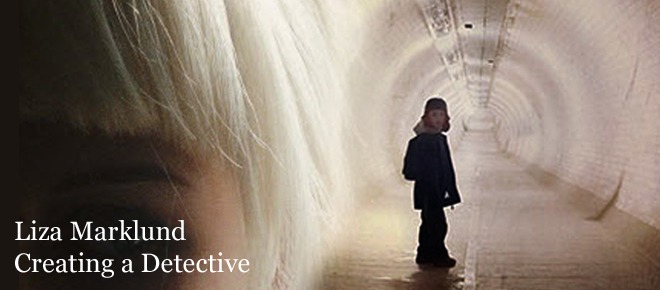Writing
Liza Marklund: Creating a Detective
This Wednesday we’re once again musing on the creative processes behind our favourite books. Specifically how do you research a crime novel? Taking for granted that not all authors are secretly homicidal maniacs or have second jobs as hard-nosed police detectives, the question must be asked of them; how do they create characters in professions that they have no life experience of?
Where do they begin? We asked internationally best-selling author Liza Marklund how she went about creating her first ever police procedural.
Over to Liza:
‘Lifetime is actually my first police procedural novel.
The reason I have been reluctant to write about straight police work before now is simple: I don’t know anything about it.
On the other hand, I know all about investigative journalism – inside out and back to front – which of course is the reason why my central character is an investigative journalist with the same interests, professional responsibilities and specialist areas that I had when I worked as a journalist.
I have had the ambition of depicting a female police officer torn between various loyalties for many years, and in order to be able to describe her way of thinking, her duties and vocabulary in anything like a credible way, I needed to shadow a female police officer for a fairly long period of time.
I was astonishingly lucky to make the acquaintance of Matilda Johansson.
Matilda was a police constable with the Södermalm Police in Stockholm when she first contacted me. She asked me if I would give a lecture to a network of female police officers on Södermalm. After a bit of discussion I finally made it to the police station in the Katarina district one afternoon in the spring of 2006.
‘Do you want any sort of payment?’ Matilda asked afterwards.
‘I don’t want payment,’ I said. ‘I want to ride in a police car.’
And that was what happened.
On her days off Matilda listened to my outlines of various scenarios and developments covering the work of the police in the novel as I wrote it. She patiently explained what worked and what didn’t. And, God knows, I needed the help!
The fact was that I got stuck on the very first sentence of the book.
The police officer in my novel, Nina, was supposed to be sitting in her patrol car when she heard that shots had been fired on nearby Bondegatan. Simple – until I realised the following:
1. What’s it called when a message comes over police radio? A call? A message? Something else?
2. Who delivers the message? What are they called? And where are they, in purely physical terms?
3. What form of words do they use?
4. How does Nina respond?
5. What’s the police radio called?
6. What does it look like? Whereabouts in the patrol car is it?
7. What’s the patrol car called?
Matilda gave me the answers:
The message is a ‘call’, and it comes from someone known as ‘control’ sitting in the Regional Communication Centre on the island of Kungsholmen in Stockholm. There are also ’emergencies’, much more serious than ‘calls’. The system that control uses is either the 70 or 80 system (70 covers the suburbs, 80 the inner city). Police officers always answer with the name of their vehicle, known as a patrol car, and they always conclude all communication with the word ‘over’. Only control and senior officers get to say ‘over and out’.
You can’t make things like that up. Or at least I can’t. The closer I can get to reality, the better it usually is. If I’m going to write about a forest, I go out to a forest and listen and smell and take in the light coming through the branches, and feel the bark and the rocks. If I’m going to write about a prison, I get in touch with the management and go out there and undergo all the security procedures and get locked up in a cell.
So this is what happened with my depiction of police work. The character of Nina acts in the same way that the real-life Matilda has done in similar situations, the way she has been taught to act. Together with Matilda I went out in patrol car 1617 on Södermalm, held the radio and poked and prodded anything I could, and wrote up everything. I looked into every corner of the police station, including the gym and the weapons store. Then I went home and got on with my writing, and Matilda read my various sketches and drafts and corrected the worst of my misunderstandings. (A few remain, because of the demands of fiction. The narrative still has to work, after all.)
That’s how I found my Nina.
Thanks again, Matilda (who I might add has been promoted and is a detective in the city centre these days).’
And a big Thank You from us to Liza Marklund for sharing with us how she went about researching her first police procedural novel LIFETIME.


Please note: Moderation is enabled and may delay your comment being posted. There is no need to resubmit your comment. By posting a comment you are agreeing to the website Terms of Use.